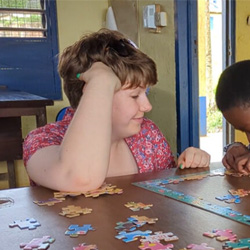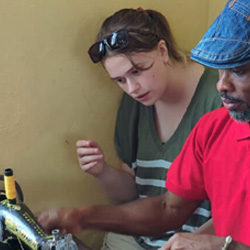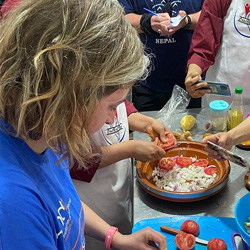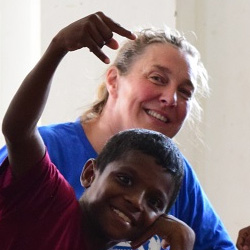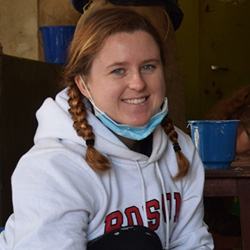Everest Base Camp trek kit list
Trekking to base camp? Then you’ll need our Everest Base Camp trek kit list. This page will help you plan what to pack!
Choosing the right equipment is one of the most important parts of preparing for your trip. Having the right or wrong kit, or missing things completely, can really impact on your experience in the mountains.
Below is our suggested kit list to help you prepare for the VoluntEars Everest Base Camp trek trip.
If you have to buy any new equipment for this trip then you’ll find there are many brands. Higher quality items tend to last longer and may include additional features or be more comfortable.
Please please please wear all your clothing and use all the equipment several times before arriving in Nepal so you know it fits and is comfortable. Then you will know quickly what clothing layers to swap into as the weather changes etc.
Bags
| Daypack: 25-35 litre | Large enough for you to carry day-use items every day on the trek (water bottle, camera, snacks, extra clothing layers, 1st aid kit) |
| Day pack cover (optional) | To keep your day pack dry in the event of rain |
| Large suitcase / rucksack | To take all your luggage to Nepal. You can leave this bag at the hotel in Kathmandu with spare clothes for before / after the trek |
Sleeping gear
| Sleeping bag |
Either take with you or rent in Nepal (Rs 400 / day) Should be rated to at least -20 Celsius, has a hood and is of good quality. Down filling is lighter, synthetic is cheaper (if you want to buy one)” |
| Sleeping bag liner (optional) | Adds a bit of warmth and cleanliness if using a rented bag |
Headware
| Sun hat / cap for sun protection | Wide brimmed hats protect ears, neck and face. Protects from the strong rays of the sun at high altitude. Helps prevent burning and dehydration |
| Beanie / ski hat | To keep your head warm when it’s cold |
| Buff / bandana / snood | One of the most important items of clothing. At high altitudes the air is dry and cold and the mountain trails can be dusty in dry weather. Wearing one of these over your mouth/nose while walking helps prevent sore throat / dry coughs. Also keeps neck warm in cold windy conditions |
| Sunglasses | Dark, wrap around sunglasses, with UV protection, preferably category 3 or 4 to protect against harsh UV rays and ice/snow glare at higher alitudes. Spare pair useful too. Also helps protect eyes against wind and dust |
| Head torch | Essential for mornings & evenings in the tea houses, and if trekking during darkness. Ensure it works well and has tilting function (so you don’t dazle other people). Pack extra batteries / usb powerbank |
Upper body clothing
| Short sleeve dri-fit shirts | Polypropolyene, nylon, synthetic (not cotton), moisture wicking, short sleeve for wearing when warm |
| Long sleeve base layers | Heavier & thicker than above, worn as another layer when cooler, merino wool or synthetic fabrics (not cotton), this provides warmth and dries quickly, long sleeve |
| Fleece jacket | Helps keep you warm, wear it over base layers |
| Soft-shell jacket | These are often thicker than a normal fleece jacket and often give some protection against light showers. This can be worn over the base layer and fleece so good if you feel the cold. Wear a hardshell (waterproof) jacket over this in heavy rain |
| Outer waterproof windbreaker jacket (hard-shell) | Provides a waterproof outer layer. Should be lightweight and the hood should protect you from rain and help block the wind from your face |
| Down jacket (insulated) | For wearing when it’s very cold. Packs small |
Gloves
| Light weight / liner gloves | Thin gloves you can wear inside your thick gloves but also wear on their own when it’s chilly but not extremely cold. E-tip gloves work with mobile phone screens |
| Heavy weight | Thick, warm gloves / mittens for using high up on the trails and in the evenings |
Lower body clothing
| Hiking shorts | Recommended for when it’s sunny and warm, especially lower down at the start / end of the trek |
| Hiking trousers | Lightweight, 2 pairs, some people like the zip-off ones (turns them into shorts) |
| Base layer | Either merino wool or synthetic material. You will wear these under your trekking trousers on the final days of the trek when it’s colder in the high altitude. |
| Hardshell / waterproof trousers | |
| Jogger bottoms | To relax in and keep warm in the tea houses at night |
| Underwear / sports bras | Ideally moisture-wicking fabric to avoid sweatiness. |
Footwear
| Hiking boots, spare laces | Should be sturdy, warm, waterproof, good ankle support. MUST be well broken-in before arriving in Nepal. A single bad blister can end your trek. Your boots must be comfortable as you will wear them for many hours, every day for nearly 2 weeks. Make sure your boots have good deep-cut grips on the sole to prevent you from slipping. |
| Trainers | Every evening you will want to take your boots off when we arrive at the tea houses and you’ll need something else comfortable to wear. We recommend taking a pair of trainers |
| Flip-flops / crocs / sliders / slippers | Useful when showering or wearing around the tea houses if it’s warm |
| Hiking socks | 3-6 pairs of medium weight hiking socks – synthetic or wool will keep your feet dry and comfortable (not cotton) |
| Thin socks | To use with your trainers in the evenings |
| Gaiters (optional) | Used most often during the winter / rainy seasons to keep water, snow, grit etc out of your boots |
Miscellaneous trekking equipment
| Trekking poles | Adjustable height |
| Poncho (optional) | Some people like ponchos instead of traditional waterproof jackets because it covers you and your day-pack and are extremely breathable |
| Water bottles | 2 wide-mouth bottles with 1 litre capacity each |
| Rehydration tablets | Replace the electrolytes lost from sweating |
| Thick bin bags / dry bags | To put your clothes in to keep them dry in case it rains and your bag leaks |
| Hand / foot warmers (optional) | It can be nice to warm your hands on or to warm your boots |
| Toiletry bag | For all your toiletries (which we won’t list here, but keep them small and minimal) |
| Female sanitary products | Enough for 12 days trekking |
| Prescription medication | Bring sufficient for the duration of the 2 week trip and carry in your hand luggage on the international flights |
| Suncream | SPF 30+ or 50+ is recommended for the high altitude. Take a few small tubes instead of one big one |
| Chapstick (with sunscreen protection) | At high altitude the air is very dry and it can also be windy and sunny – all these factors together can all give you dry lips |
| Moisturiser | Both for face & body. Your skin gets really dry in the Himalayas |
| Hand sanitiser | 1 – 2 bottles |
| Camera | With spare batteries / memory cards |
| Cochlear / hearing aid Batteries, chargers, dry boxes | |
| Plug adapter | 2 round pins |
| Charging cables | For all electrical devices |
| Power bank | To charge electrical devices when no electricity available |
| Snacks | Energy bars, nuts, dried fruit, protein bars etc to carry in your day pack and eat along the way in between meals |
| Cough / throat sweets | Helps to prevent / soothe sore throats |
| Diamox | To help prevent the symptoms of altitude sickness. You can order from online pharmacies like Boots |
Note about weight limit: 15kg is your total luggage limit for the flight to Lukla (you can take more than this to Nepal but not on the trek). Pack and weigh all your trekking gear before going to Nepal.
There may be other items of kit which you’ve used before and like to have with you so feel free to add things but remember the weight limit!
Here is a downloadable PDF version of the list in case you want a printed copy to help you pack: VoluntEars Everest Base Camp trek kit list
Any questions? Email us at [email protected] or sms/whatsapp: +44 7713 752124
If you’ve not yet joined us but you’re interested in the VoluntEars Everest Base Camp trek trip then click here to read more about it.
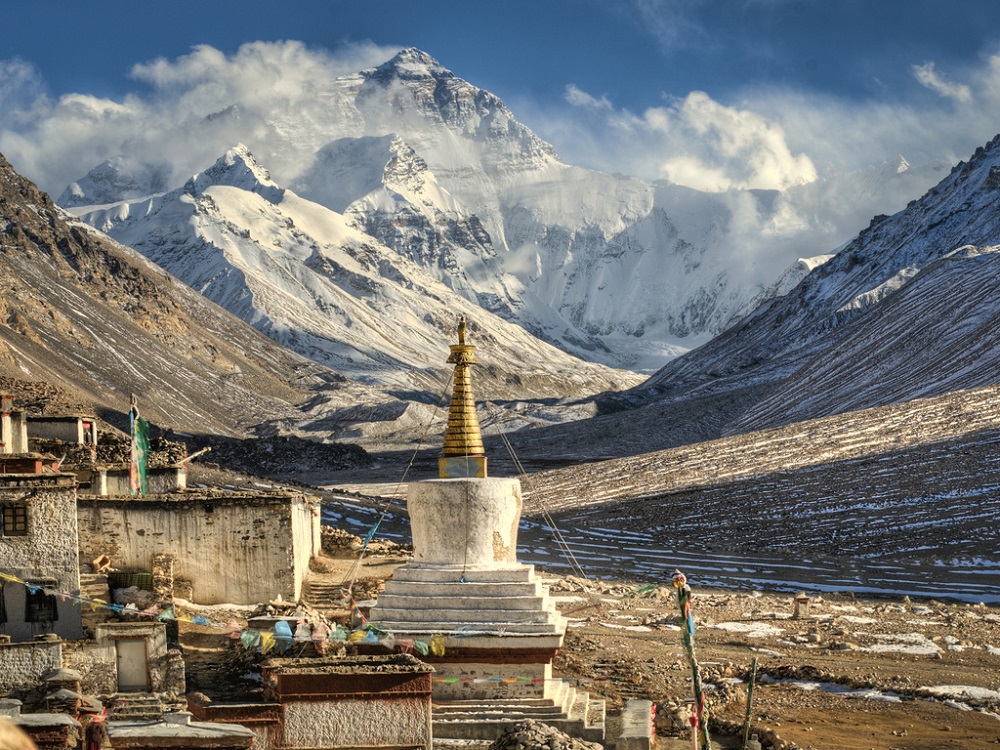 One of the Buddhist temples you’ll see along the way to Everest Base Camp.
One of the Buddhist temples you’ll see along the way to Everest Base Camp.
Reviews
Next Steps

